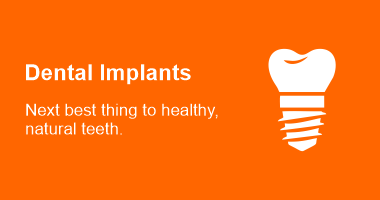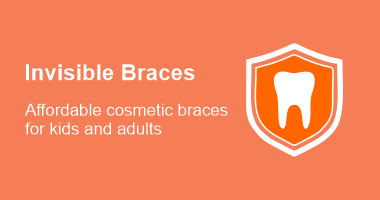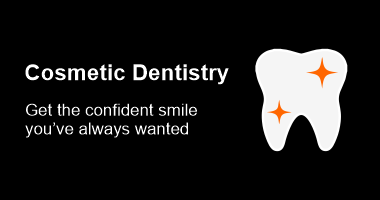5 Signs and Symptoms of Gum Disease and What to Do About It

Periodontitis or periodontal disease is a gum disease causing bacterial development and growth in the mouth. If not treated properly, it can lead to the damage and loss of teeth.
In the early stages of gingivitis, plaque builds up causing infection of the gums. So, while brushing the teeth, bleeding occurs in the gums. The teeth are still firmly anchored in their sockets even when the gums are sore. Till this time, no bone or tissue damage has occurred, and it can be treated with simple treatment and medication.
Plaque is a sticky film of bacteria that forms on the surface of the teeth. This bacterial accumulation leads to secretion of certain acids, which damage the outermost covering of your teeth, enamel, that causes tooth decay. Gingivitis also develops as a result of this accumulation, which irritates and inflames your gums over time.
If gingivitis is not treated, it leads to a more severe condition known as periodontitis. Periodontitis causes the innermost wall of the gum and the jaw bone to move away from the teeth, forming pockets. These small spaces between gums and teeth accumulate food, and if left untreated, can become infected. As plaque develops and grows underneath the gum line, the immune system of the body attacks the bacteria.
As and when the condition keeps progressing, the pockets become deep, leading to more damage to gum tissue and bone. As a result, tooth loss occurs because the teeth are no longer cemented or anchored in place.
Plaque deposition is one of the significant causes of gum disease. Other factors can have a significant role in periodontal disease. Some of them are:
Gingivitis appears easily due to poor oral hygiene habits, like frequently skipping brushing and flossing.
Variety of illnesses: Gum disease can be caused by certain illnesses. It includes diseases that attack and weaken the immune system, such as cancer and HIV.
Hormonal changes which the body undergoes during puberty, menstruation cycle, pregnancy and menopause, make gums more sensitive, making them more likely to develop infection.
In patients with diabetes, the body’s capability to use blood sugar is inhibited, making them more prone towards infections, such as periodontal disease and cavities.
Smoking also adds on difficulty for gum tissue to recover itself.
The development of gingivitis can also be affected by a history of dental disease in the family.
Prolonged stressful conditions can also lead to dental diseases.
Gum disease progresses without any signs and symptoms until it reaches late stages. Although the periodontal disease symptoms are typically modest, the condition can be detected when noticed carefully. Gum disease causes the following symptoms:
Some sort of bleeding from gums while brushing and after brushing
Red and swollen gums
Unpleasant breath or a consistent bad taste in the mouth
Gums that are receding
If a sip of cold water makes you feel a shiver, along with shrinking gums, and your doctor termed it as a teeth sensitivity when exposed to heat or cold
Weakening or displacement of your teeth due to damage to the bones that keep them in place can alter the way your teeth fit together when you bite.
If you experience any of the aforesaid symptoms, you should consult a dentist for proper diagnosis of the gum disease. A dental specialist will look through your medical information for any factors that could be causing or triggering the symptoms.
Following are all factors the dentist might consider while confirming the diagnosis of gum damage:
Gum bleeding, inflammation, tightness and depth of the pocket (the severity of the disease is dependent on the depth of the pocket)
Tooth sensitivity and movement, along with appropriate alignment of the teeth
Dental X-rays to screen bone loss in the surrounding region of teeth
Smoking or taking medications that can cause dryness in the mouth
Gum disease treatment aims to encourage the adhesion of healthy gums to teeth, minimise swelling, pocket depth and infection risk, and stop disease progression.
Non-surgical therapies that potentially inhibit bacterial development are effective. In rare cases, surgical procedures to replace supporting tissues are also available. The non-surgical treatment options are:
Deep cleaning: The first line of defence against gum disease is a thorough cleaning. Scaling procedures use lasers or ultrasonic instruments to eliminate germs and bacteria from the surfaces of your teeth, as well as beneath your gum line.
Planing the roots: Root planing reduces bacterial infection that causes discomfort and prevents gum repair. It also smoothens the root surfaces to minimise tartar and bacteria development.
Antibiotics: Antibiotics, in the form of oral or topical application, helps to eradicate bacterial infection. Antibiotic mouthwash or antibiotic mouth gels are suggested to be used in the space between teeth and gums after extensive cleaning to eliminate infection-causing germs.
Treatments involving dental surgery are:
Flap surgery (pocket reduction surgery): In the effective scaling and root treatment procedures, tiny cuts are made in gums to take a small part of gum tissue from the roots. The underlying bone needs to be recontoured before the gum tissue is sutured back in place in order to maintain healthy gum tissues.
Grafts of soft tissue: When you lose gum tissue, your gum line also starts disappearing. A small portion of the injured soft tissue can be repaired by joining tissue from another tooth or using tissue from the roof of your mouth. This aids in the prevention of gum recession, the concealment of visible roots, and the improvement of the aesthetic look of your teeth.
Bone grafting: It involves the grafting of bone made up of small fragments of your bone, synthetic bone or donated bone. It is used when periodontitis has caused damage to the bone that surrounds the root of the tooth. Your tooth loss can be prevented by bone transplant, which helps in holding your tooth in place. Moreover, it serves as a foundation for healthy bone repair and regeneration.
Takeaway
Periodontitis is a likely experience that can be avoided in most cases. Poor oral hygiene is primarily the cause. You should visit or consult your dentist if you witness any of the symptoms related to gum disease.
Your dentist can classify periodontitis in different stages depending on the severity and extent of the disease, the challenges of medical treatment, your health conditions, its causes and overall wellness.
Brushing your teeth at least twice a day, cleaning them daily, and following proper medication and advised course of treatment, considerably enhance your chances of successfully treating periodontitis and minimising your risk of developing it.



